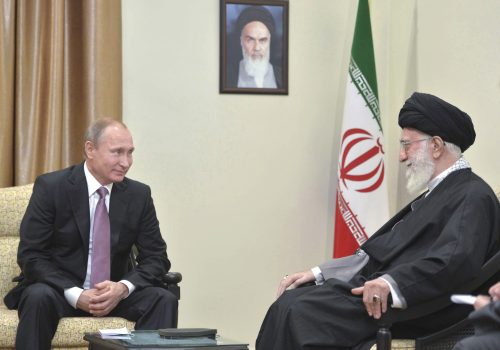
Russia’s New Alliance with Iran may Block a New Nuclear Deal
by Marah Al Bukai
Editor’s Letter
In response to the escalating tensions between Iran and the United States, Tehran has taken unprecedented security steps by providing 51 Iranian cities and towns with a civil defense system which is capable of responding to any external attack.
According to a statement by the Iranian Deputy Defense Minister, General Mehdi Farhadi, these newly developed system will enable Iranian armed forces to “identify and monitor threats around the clock.” He added in an interview with the local media: “We are dealing with the fact that conventional warfare has been replaced with new technology, be it cyber, biological or radiological.”
The tensive defense measures came along with escalating military tensions in the Red Sea following two Iranian navy’s attempts to seize several US drones from international waters.
The first attack happened when an Iranian ship attempted to seize an American drone flying over the Persian Gulf by towing it behind the ship, before the American Fifth Fleet hastily dispatched a helicopter and a ship to stop the Iranian plot.
In the second attempt, Iran went even further, seizing two American drones operating in close proximity to one another in international waters.
However, the Fifth Fleet once again detected the Iranian aggression and sent a helicopter towards the Iranian ship. While approaching the Iranian warship, the helicopter found the ship’s crew trying to hide the American drones with tarpaulins. Only then, the Iranian soldiers quickly threw the two planes into the Red Sea.
These events are concrete evidence of the Iranian harassment to the US forces while carrying out missions in international waters– missions which are previously announced to the countries of the region.
Tehran’s aims are to push the confrontation with Americans to the edges in order to make some gains before reaching a new nuclear agreement. Thus, in the wake of the withdrawal from 215 deal by former President Trump, the nuclear issue became an arena of rampant disputes and ambiguity, while Iran is constantly trying to escape its obligations to limit nuclear activities.
Tehran did not only provoke the US Navy during its routine, but also is sending to Russia hundreds of drones to support Russian war on Ukraine, and to incite indirect clashes with Washington by supporting Moscow in its battle against Ukraine’s allies of the NATO.
The so-called “temporary marriage” between Moscow and Tehran appears to be closer to an overnight contract fueled by mutual interests, rather than a strong alliance between two nations. However, in the mid of August, two Russian cargo planes managed to ship the first batch of “Shahed” and “Mohajer 6” drones made in Iran.
Russia has been slowly developing its combat drones, but sanctions have made it difficult to acquire the technology needed to manufacture its drones, with the main Chinese provider is steering clear of selling to Russia or Ukraine this advanced technology to avoid involvement in the war.
Washington, which closely follows the drones’ airlift between Moscow and Tehran, has obtained accurate information on the parts used by Russia to develop its own drones that were used last July in Ukraine, that are proved to be stolen from western technology.
To address the Russian drone attacks on Ukraine, Washington has confirmed its last military aid to Kyiv that is containing the VAMPIRE anti-drone missiles system. The laser-guided VAMPIRE missiles have an advantage of efficient mobility, as only two people are needed to operate them, and they can be easily installed on the top of a small truck.
The Iranian drones now involved in the war on Ukraine can easily turn to be the “mercy bullet” to terminate the lame nuclear negotiations.
Translated/edited by Husam Ramadan
